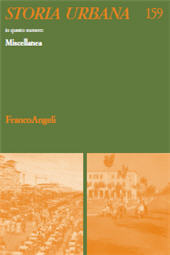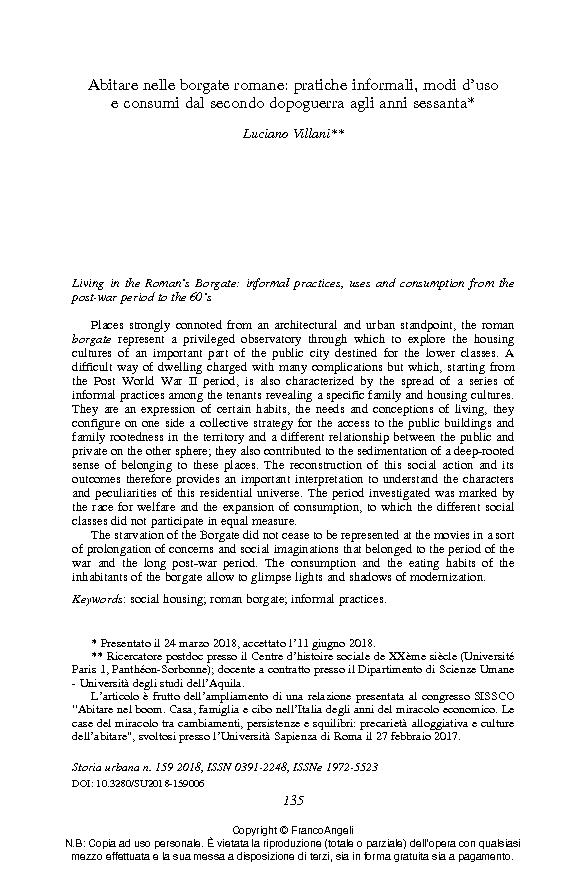Abitare nelle borgate romane : pratiche informali, modi d'uso e consumi dal secondo dopoguerra agli anni sessanta
135-164 p.
Luoghi fortemente connotati dal punto di vista architettonico e urbanistico, le borgate romane rappresentano un osservatorio privilegiato attraverso il quale esplorare le culture abitative di una parte importante della città pubblica, quella destinata ai ceti più bassi. Un abitare complicato da tanti disagi, ma che a partire dagli anni del secondo dopoguerra appare anche caratterizzato dal diffondersi tra gli inquilini di una serie di pratiche informali rivelatorie di specifiche culture familiari e abitative. Espressione di consuetudini, bisogni e concezioni dell'abitare, esse configurano da un lato delle strategie collettive di accesso all'edilizia pubblica e di radicamento familiare nel territorio, dall'altro delle modalità d'uso degli spazi comuni che definiscono nuovi rapporti tra sfera pubblica e privata; contribuirono inoltre al sedimentarsi di un radicato senso di appartenenza ai luoghi.
La ricostruzione di quest'azione sociale e dei suoi esiti fornisce pertanto un'importante chiave di lettura per comprendere caratteri e peculiarità di questo universo residenziale. Il periodo indagato fu segnato dalla corsa al benessere e dall'espansione dei consumi, cui le diverse classi sociali non parteciparono in egual misura. La fame nelle borgate, del resto, non cessò di essere rappresentata al cinema, una sorta di prolungamento fuori tempo massimo di preoccupazioni e immaginari sociali appartenuti al periodo della guerra e del lungo dopoguerra. I consumi e le abitudini alimentari degli abitanti delle borgate consentono così di intravedere luci e ombre della modernizzazione [Testo dell'editore].
Places strongly connoted from an architectural and urban standpoint, the roman borgate represent a privileged observatory through which to explore the housing cultures of an important part of the public city destined for the lower classes. A difficult way of dwelling charged with many complications but which, starting from the Post World War II period, is also characterized by the spread of a series of informal practices among the tenants revealing a specific family and housing cultures. They are an expression of certain habits, the needs and conceptions of living, they configure on one side a collective strategy for the access to the public buildings and family rootedness in the territory and a different relationship between the public and private on the other sphere; they also contributed to the sedimentation of a deep-rooted sense of belonging to these places.
The reconstruction of this social action and its outcomes therefore provides an important interpretation to understand the characters and peculiarities of this residential universe. The period investigated was marked by the race for welfare and the expansion of consumption, to which the different social classes did not participate in equal measure. The starvation of the Borgate did not cease to be represented at the movies in a sort of prolongation of concerns and social imaginations that belonged to the period of the war and the long post-war period. The consumption and the eating habits of the inhabitants of the borgate allow to glimpse lights and shadows of modernization. [Publisher's text].
-
Articoli dello stesso fascicolo (disponibili singolarmente)
-
Informazioni
Codice DOI: 10.3280/SU2018-159006
ISSN: 1972-5523
MATERIE
PAROLE CHIAVE
- Edilizia popolare, Borgate romane, Pratiche informali
- Social housing, roman borgate, informal practices



